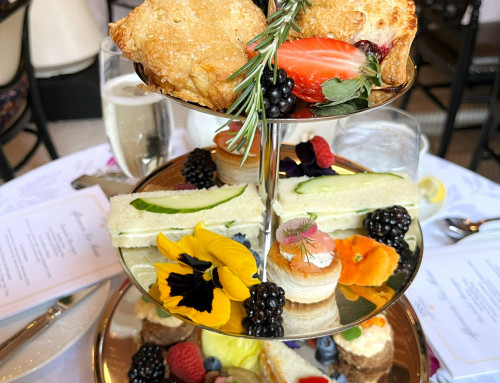Throughout the Middle Ages and well into the Elizabethan period, Christmas was an austere and holy season, full of fasting and stringent religious rules. By time January rolled around, people were ready to cut loose. On the first day of January, Europeans came together for a celebration known as the Feast of Fools.
The Feast of Fools originated as a religious event honoring the Feast of the Circumcision, which supposedly took place in early January. A lesser, more playfulfestival, organized by the church’s sub deacons and falling on the same day, allowed the church’s lower-ranking clergy to poke fun at higher authority. Often the youngest or most subordinate boys in the church were symbolically elevated to a higher position of priest or bishops, then permitted free reign of mockery and buffoonery. In this respect, the Feast of Fools symbolized a social revolution during which the normal order of things was reversed. Peasants became kings. Choirboys were made popes. Over the centuries, this New Year’s Day party took on a life of its own. What started off as an annual church-sanctioned festival evolved into a spectacle of debauchery from which many of our modern New Year’s and Mardi Gras traditions have descended.

A Medieval Saturnalia
The concept of role reversal and excessive tomfoolery has echoes of the pagan Roman festival Saturnalia. Ancient Romans celebrated Saturnalia on December 17, but the holiday became so wildly popular it ended up lasting seven days. This was a religious festival honoring Saturn, the harvest god, but it morphed into a weeklong period of merrymaking and gift giving. During this period, the social order was inverted and class distinctions temporarily abolished. Public gambling, intoxication, and nudity were permitted.
The medieval Europeans took their version of Saturnalia to a similar extreme. The Feast of Fools festivities were held in and around the church. Religious rituals, social and religious hierarchy and holiday traditions were openly mocked, not only by the “newly appointed” leaders, but also by all the townspeople. After attending faux services, the churchgoers partied and gambled at the altar, marched in lewd parades, and performed irreverent plays. All over town, people openly participated in wanton displays of nudity and intoxication. In short, the normally rigid restraints placed on public behavior were abandoned.
By time of Queen Elizabeth’s reign, the Feast of Fools had become a full-blown bacchanal, openly condemned by church leaders as blasphemous and profane.
Hee-Haw and Pass the Wassail
By the thirteenth century, the Feast of Fools had spawned similar celebrations such as the Feast of the Ass, during which a young girl on a donkey, representing the Virgin Mary, was led into the church and positioned at the alter as the congregation responded “Hee-haw” to the fake priest’s sermon. Like the Feast of Fools, the Feast of Asses was originally a Christian holiday celebrating the holy’s family’s flight into Egypt. Before long its religious connotation was completely absorbed into the big party and a pure donkey-narrative surfaced.

The most widespread custom was to elect a young, male chorister, or even the town fool, to parody the highest-ranking church officials. The Boy Bishop, as he was formally known, was “made into” a priest and gave mock sermons. Again, this tradition fell in line with the religious Feasts of Saint Nicholas or that of the Holy Innocents, but ended up being linked with the Feast of Fools. In early January, priests handed over their church for a day to the child who, dressed in full priestly garb, presided over services. The Boy Bishop and his juvenile entourage were then led in a drunken, colorful procession through town, handing out lewd blessings.
The Boy Bishop went by many names in different countries: the Abbot of Unreason in France and Scotland, the Lord of Misrule in Britain, and most popularly, The King of the Bean in England. This became one of the most persistent traditions in all its cross-dressing bawdiness and utter profanity. It took a great effort for the church to snuff out this custom.

The Bean King
The custom of appointing the Boy Bishop during the Feast of Fools grew into the long-lasting tradition of crowning a King of the Bean. A bean, ring or some other trinket was baked into a cake. Whichever party goer was served the slice of cake containing the prize was named king of the feast. To ensure fairness, the youngest child would hide under the table and blindly assign pieces of cake to random people. If a woman received the lucky slice, she was given the honor of naming the King of the Bean.
Once crowned, the unruly Bean King was extended royal privileges as the “Lord of Misrule.” He played pranks, behaved promiscuously and over-indulged in the popular Yuletide punch, Wassail. Quite often, the party took on a carnival-like atmosphere with the baring of private body parts and excessive drunkenness. It’s good to be the Bean King, but the title also came with the responsibility of providing the following year’s King Cake. A small price to pay to be king for a day!
The English version of the Feast of Fools chose both a king and queen by hiding a bean and a pea within the same cake, which was decorated with paper crowns worn by the “monarchs”. This round cake made specifically for the season between the Christmas and the Epiphany, was nicknamed the King Cake or Three King’s Cake.

According to Catholic tradition, it took twelve nights for the three Magi to arrive in Bethlehem to honor the birth of Christ. The Three King’s Cake was served during
the Feast of the Epiphany and twelfth night festivities which fell in early January. This celebration of the visitation of the magi was, like the other customs, incorporated in the Feast of Fools.
Another popular belief roots the King of the Bean tradition in the Saturnalia of ancient Rome. A low-ranked man selected to impersonate the god Saturn would undertake mock magical ceremonies and mischievous behavior during twelve days of revelry. This feast was meant to predict and ensure a good harvest. In medieval times, the upcoming year’s harvest was likewise forecasted during twelve days of festivals, with each day representing one month of the year. In this respect, the King of the Bean is believed to be a direct descendant of the original Lord of Misrule, the King of Saturnalia.
From whatever practice it hailed, the sport of crowning the King of the Bean via random cake selection was indulged well into the Tudor era. The custom was abolished by Elizabeth I during the Reformation. Today’s King Cake parties of New Orleans are its direct descendant, as is the wearing of New Years Eve hats and crowns. New Orleans’s Mardi Gras and Rio’s Carnival are the best examples of a contemporary Feast of Fools.

Midnight Cacophony
Throughout the history of man, it’s believed that noise wards off evil spirits. What better way to begin the New Year than by driving out devils and demons with a cacophony of clamor? During the midnight hour of the Feast of Fools, children banged on doors while men and women rang bells, drummed on walls and clanged pots and pans.
But no matter how profane and worldly the Feast of Fools became, religion and superstition took center stage. The underlying desire to purge the village (and oneself) of wickedness and ensure a propitious new year was serious business. The New Year was greeted with as much reverence as revelry.
Abolishing the past was vital in ushering in a healthy New Year. A literal interpretation of “out with the old and in with the new” was seen in acts of replacing old articles of clothing or changing one’s home interior. A more symbolic folk custom is seen in the ceremonial Reception of the Dead. Processions of masked people representing deceased relatives danced their way to the feast then laid to rest afterwards. The masks were buried or thrown into the water, laying their souls to rest. The spirits in return would watch over the living.
The spirit of regeneration and renewal is seen in ritual gift-giving, lucky foods, symbolic behavior and auspicious acts. A gift of anything ring-shaped was considered lucky and symbolizes “coming full circle” through the year. They consumed hog meat in hopes of prosperity and cabbage for luck, both dishes becoming staples at the Feast of Fools. Many of these centuries-old traditions still have distinctive strains in today’s New Year’s celebrations, meals, masquerades, and parades.

Wanderlust Tours owner, Shawnie Kelley, is a regular contributor to Renaissance Magazine.







Leave A Comment